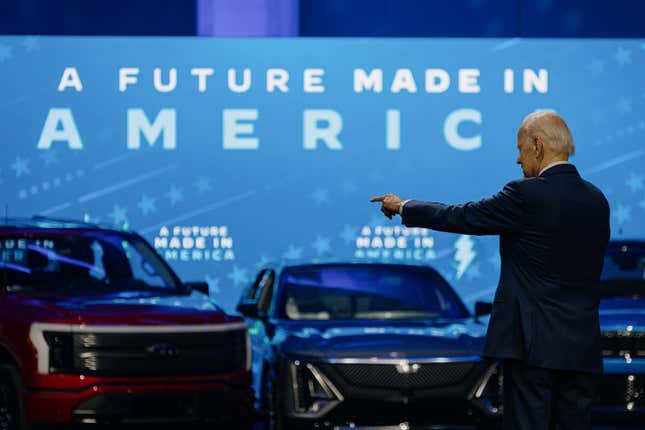Biden’s First EV Charging Station Goes Online After $7.5 Billion In American EV Investments

Despite billions in investments for the development of EV infrastructure in the U.S., not a single charging station had gone live thanks to President Joe Biden’s 2021 law — until now. The first EV charger paid for by Biden’s Bipartisan deal has come online in Ohio, according to Reuters, which marks the operational start of what the feds claim will be a national network of EV charging stations.
Electric Car Charging Still Sucks, But That Might Change
The U.S. has been funneling billions from the 2021 trillion-dollar infrastructure law in order to get its EV charging network off the ground, but the stations had yet to start operating. The current administration said it would allocate $7.5 billion into EV chargers as part of the Bipartisan Infrastructure Deal, chasing after half-a-million chargers by 2030 to be placed along major travel corridors:
The legislation will invest $7.5 billion to build out a national network of EV chargers in the United States. This is a critical step in the President’s strategy to fight the climate crisis and it will create good U.S. manufacturing jobs. The legislation will provide funding for deployment of EV chargers along highway corridors to facilitate long-distance travel and within communities to provide convenient charging where people live, work, and shop. This investment will support the President’s goal of building a nationwide network of 500,000 EV chargers to accelerate the adoption of EVs, reduce emissions, improve air quality, and create good-paying jobs across the country.
Reuters adds that the plan was to install the chargers in the network no more than 50 miles apart from each other. That should go a long way to easing range anxiety, which many people in the U.S. still cite as one of the main reasons why they’re delaying the adoption of EVs, as the BBC reports.
Photo: Al Drago (Getty Images)
So far, however, there are reportedly just 165,000 public charging ports in the U.S., which is far behind the 500,000 goal the Biden administration set for itself. The feds are nonetheless touting the EV chargers they deal has funded, perhaps considering there is still time before the 2030 deadline. The feds say that the U.S. has increased the number of EV chargers by 70 percent. Per Reuters:
The White House goal is to grow the nationwide network of chargers to 500,000, including high-speed chargers – no more than 50 miles (80 km) apart – on the nation’s busiest highways and interstates.
The funding comes from the $1 trillion 2021 infrastructure law. Energy Secretary Jennifer Granholm said the first station opening is a major step to “create a convenient, affordable, and reliable electrified transportation system.”
As of December, the United States has more than 165,000 public charging ports and since the start of the Biden administration, the number of publicly available fast charging ports has increased by more than 70%, the White House said.
That’s all well and good, but it’s doesn’t help anybody if chargers aren’t actually working yet. Newly built charging stations are awaiting necessary infrastructure changes to go online, such as service from utility providers, among other things.
Getting chargers online has to go through a process of proposal submission, build planning, zoning, groundbreaking, construction, etc. Politico cites the feds saying that a reliable, standardized network will take time to build, and that “you have to go slow to go fast,” whatever that Ricky Bobby platitude means.
Meanwhile some states are still not taking any bids to award grants to even start building chargers, citing red tape from the requirements, which are the 50-mile distance between charging stations, credit card readers for easy payment, as well as guaranteed EV charger operation at least 97 percent of the time.
That sounds easy, but applicants claim the government is giving preference to plans for EV chargers that reportedly exceed requirements and include amenities beyond proper lighting, restrooms and signage. It seems chargers accompanied by dining options and other services are preferred, which makes sense since charging an EV takes longer than your average fuel stop.
For now, the first federally-funded charger has gone online near Columbus, Ohio. Vermont, Pennsylvania and Maine have broken ground on charging stations, as Reuters reports, but these stations have yet to be completed.

Photo: Erin Kirkland (Getty Images)



